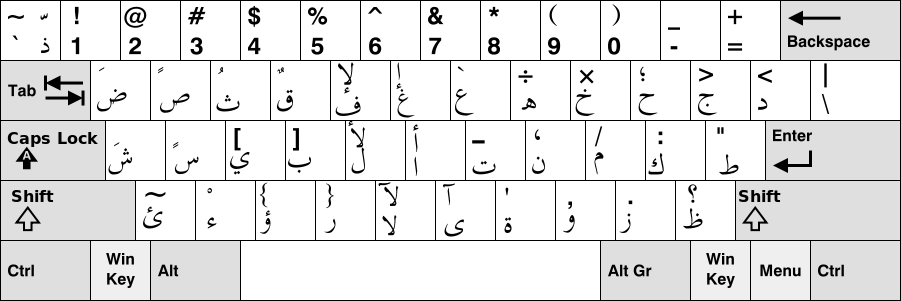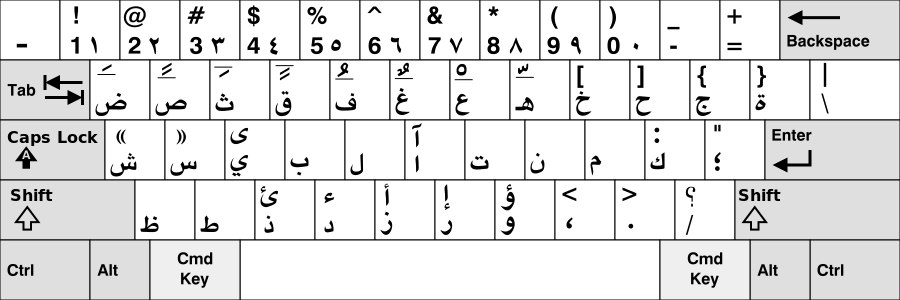Arabic keyboard: Difference between revisions
Corrected external link placement and formatting |
adding link to an arabic keyboard real example |
||
| Line 1: | Line 1: | ||
{{refimprove|date=November 2015}} |
{{refimprove|date=November 2015}} |
||
[[File:Fez-P1050500.JPG|thumb|An Arabic keyboard]] |
[[File:Fez-P1050500.JPG|thumb|An Arabic keyboard | http://arabic-keyboard.info]] |
||
The '''Arabic keyboard''' ({{lang-ar|لوحة المفاتيح العربية}}) is the Arabic keyboard layout used for the [[Arabic language]]. All computer Arabic keyboards contain both Arabic and Latin, as Latin characters are necessary for [[Uniform Resource Locator|URL]]s and [[Email address]]es. Since Arabic is written from right to left, when typing using an Arabic keyboard, the letters will start appearing from the right side of the screen. |
The '''Arabic keyboard''' ({{lang-ar|لوحة المفاتيح العربية}}) is the Arabic keyboard layout used for the [[Arabic language]]. All computer Arabic keyboards contain both Arabic and Latin, as Latin characters are necessary for [[Uniform Resource Locator|URL]]s and [[Email address]]es. Since Arabic is written from right to left, when typing using an Arabic keyboard, the letters will start appearing from the right side of the screen. |
||
Revision as of 04:27, 24 February 2017
This article needs additional citations for verification. (November 2015) |

The Arabic keyboard (Arabic: لوحة المفاتيح العربية) is the Arabic keyboard layout used for the Arabic language. All computer Arabic keyboards contain both Arabic and Latin, as Latin characters are necessary for URLs and Email addresses. Since Arabic is written from right to left, when typing using an Arabic keyboard, the letters will start appearing from the right side of the screen.
Layouts
Arabic typewriter
The first Arabic layout for typewriters was invented by Selim Shibli Haddad, a Syrian artist and inventor, in 1899.[1]

Sakhr/MSX Arabic Keyboard
IBM PC Arabic Keyboard
Mac Arabic Keyboard
Linux (Ubuntu) Arabic Keyboard
Intellark Arabic Keyboard
This section contains promotional content. (November 2015) |
The above layout is built to maximize knowledge transfer. Intellark is designed to allow QWERTY, AZERTY or any Latin-derived keyboard layout users to retain and reuse their knowledge of key locations. In Intellark, a relationship is established between Latin-based and Arabic-based characters based on phonetic sound. For example, typing the English element in the pairs (a, ا), (s, س), (d, د), (f, ف), or (w, و) ( produces the Arabic one. Next, further relationships are drawn among the Arabic characters themselves, where double pressing the element on the right in each pair in (و، ؤ) ,(د، ذ) ,(س، ش) ,(ا، أ) (ك گ٬ produces a dependent character as based on shape, phonetic sound, or both, and so on.
References
- ^ Messenger, Robert (17 October 2014). "The Arabic Typewriter Keyboard and the Syrian Artist". oz.Typewriter.





